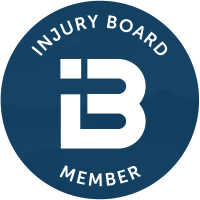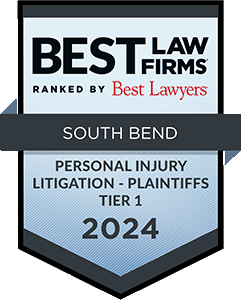 Are you a defensive driver?
Are you a defensive driver?
You may have heard the term before, but might be unsure of what it means. While defensive driving encompasses many things, the basic premise is that you try to anticipate danger and give yourself plenty of time to react to it. Instead of assuming other drivers will follow the rules of the road, you prepare as if they are going to do something reckless.
Below, we explain what defensive driving is, some of the strategies involved and how those strategies could help lower your risk of an accident.
Unfortunately, there is no way to avoid all collisions, as negligent drivers are everywhere. If the unexpected happens and you suffer an injury, our South Bend car accident lawyers are prepared to help you through the legal process. Our firm does not charge any upfront fees and only gets paid if we win your case and you receive compensation.
Call today to schedule a free case review: (844) 678-1800.
What Is Defensive Driving?
Defensive driving is all about being proactive to help prevent a collision. You need to keep your eyes on the road, hands on the wheel and your mind on driving. You also need to try to anticipate the actions of the drivers who are sharing the road. If you are prepared for someone else’s negligent driving, and you give yourself enough time to react, you may be able to avoid a crash.
We have compiled a list of defensive driving behaviors that you can use every time you get behind the wheel:
Identify and Avoid Reckless Drivers
Reckless drivers are everywhere and they pose a threat to everyone else on the road. Identifying and staying clear of these drivers can help you avoid collisions.
Watch out for drivers who are speeding or weaving in and out of traffic lanes. If you see any drivers taking unnecessary risks, keep your distance. Change lanes when you can safely do so and allow these drivers to pass.
Check Your Blind Spots Before Changing Lanes
Blind spots are areas around your vehicle that you cannot see in your rear-view mirrors. You will not be able to see any vehicles in these areas.
Whenever you are preparing to change lanes, look over your shoulder and check your blind spot before making the maneuver. You also need to use your turn signal well before you change lanes so other drivers are prepared for it.
Stay Out of Other Drivers’ Blind Spots
Every vehicle has blind spots. While drivers should check these blind spots before changing lanes, you should not expect them to take this precaution.
That is why it is important to not stay in another vehicle’s blind spot any longer than you have to. If you can speed up without going over the speed limit, you should do so. If possible, slow down or change lanes to get out of any blind spots.
This is especially important around commercial trucks and other large vehicles. If you are next to a truck and you cannot see the driver’s face in his or her side mirror, he or she cannot see you. That means you are in a blind spot.
Use Your Turn Signal Before You Make a Turn
Your turn signal lets other drivers know when you are turning, giving them enough time to react. To avoid any confusion, make sure your signal clearly indicates what direction you intend to move.
After you complete a turn or lane change, turn your signal off. If you leave it blinking, you risk confusing other drivers.
Maintain a Safe Distance Behind Other Vehicles
Following other cars too closely increases the risk of a rear-end crash, as you have less time to slow down or stop before hitting the back of the car in front of you.
A good rule for following distance is three seconds – when the vehicle ahead of you passes a stationary object, count the seconds until you pass the same object; if you did not get to three, you need to slow down and increase your following distance.
If you are driving in bad weather or on a highway with a higher speed, you should add another second or two of following distance.
Avoid Distractions
Distractions are one of the leading causes of car crashes. For example, some drivers may get distracted by their phones or may reach for objects while they are driving.
If your destination is an area that you are not familiar with, set your GPS before you start driving. You do not want to be dividng your attention between your GPS and the road.
You should also avoid fiddling with the radio while your car is in motion. Decide what you want to listen to before you start driving or have passengers change the radio station.
If there is something you must attend to, pull over to deal with it. This may include a difficult phone conversation or an argument between passengers or children in the back seat.
Teenage drivers struggle with distractions, such as social media or texting. While distracted driving is dangerous no matter your age, it is particularly dangerous for young and inexperienced drivers. Parents and guardians should educate their teens and young adults about the dangers of distracted driving and model safe driving behavior.
Avoid Drowsy Driving
Many people do not get anywhere near enough sleep. This has become normalized, so drivers do not think much of getting behind the wheel when they are fatigued or drowsy.
However, fatigue can impair judgment and reaction time, similar to driving under the influence of alcohol.
If you feel tired, or you have been on a long drive and have not taken a break in a while, you should pull over somewhere safe and take a nap, if possible. If you have another passenger who can drive, have him or her take over for you.
Slow Down and Stay Calm
While some drivers are naturally more aggressive and prone to speeding, others can fall into aggressive driving because of an argument with a friend or because they are irritable from a rough day at work.
When possible, take a few moments to calm yourself down before you start driving. You do not want to take your anger or distress out in your driving.
Heavy traffic can also trigger aggressive driving, especially when drivers are running late to work. However, it is important to stay calm in traffic and remember that reaching your destination safely is more important than arriving a few minutes early.
Call Pfeifer Morgan & Stesiak After a South Bend Car Crash
At Pfeifer, Morgan & Stesiak, we have been securing favorable results for our clients for decades. We are ready to help guide you through the legal process, focusing on your best interests each step of the way.
If you were injured in a collision, our firm is here to help you determine your legal options without any upfront fees or costs. We only get paid if you receive compensation.
Call our office today to discuss your claim: (844) 678-1800.











